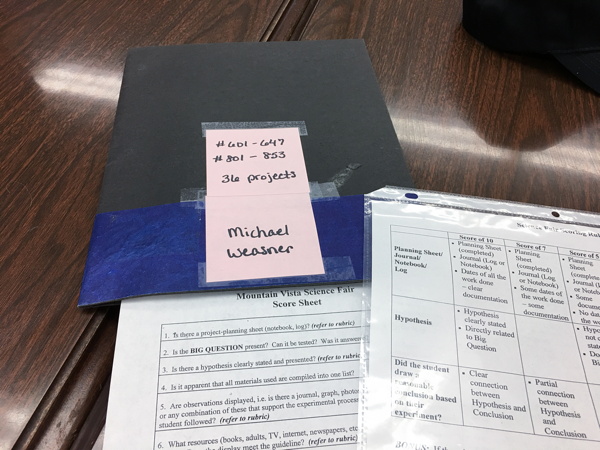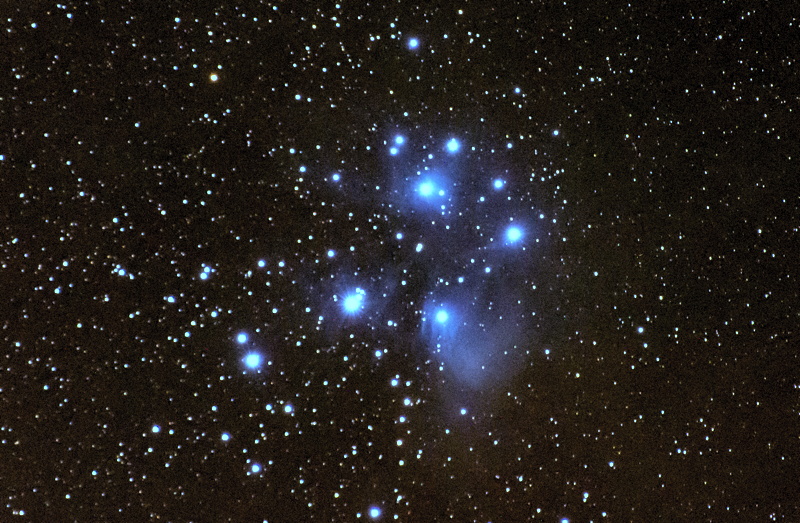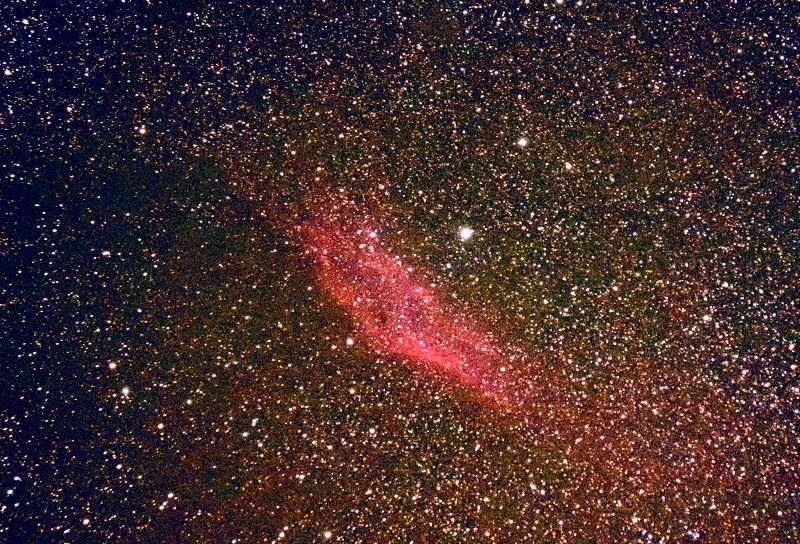D7200 DSLR Piggyback Imaging:
Pleiades, California Nebula, Hyades
Posted: 3 December 2015
Wednesday, 2 December 2015, was mostly clear during the daytime. During the day I was at a local school as a judge for their Science Fair. Here are some of the materials used for judging:

|
Open: Wednesday, 2 December 2015, 1807 MST Temperature: 55°F |
Session: 892 Conditions: Clear |
I noticed that the eyepiece holder tube of my Meade 2" Diagonal has come slightly loose. I reported the same problem with a previous Meade 2" Diagonal in January 2014, which was replaced by Meade under warranty. I will attempt to repair this one myself as it is no longer under warranty. Fortunately, the problem is not yet serious.
A site visitor asked me if the iPhone could be used as an aid to manual guiding. Could the guide star be viewed on the phone screen instead of needing the eye at the illuminated reticle eyepiece? So I investigated this. Unfortunately, the Orion SteadyPix Universal Smartphone Telescope Photo Mount will not securely attach to the guide eyepiece. The illuminator cylinder interferes. So, I can't use the iPhone for this purpose, at least, not with the SteadyPix adapter.
1828 MST: Began setting up for D7200 DSLR piggyback imaging. Mounted the DSLR with a 70-300mm lens on the 8" LX200-ACF telescope, set the lens to a focal length of 300mm, and did a focus test on the star Aldebaran with the Gerd Neumann Bahtinov Mask for Camera Lens. Then did a GOTO M45 (Pleiades) and centered the cluster in the camera viewfinder. Found a faint guide star, which turned out to be too faint for reliable manual guiding as 5 minute exposures exhibited too much trailing. However, this slightly cropped photo, guided, f/5.6, 2 minutes, ISO 12800, FL 300mm, turned out pretty good with some nebulosity showing:

1920 MST: some wind had come up. Did a GOTO NGC1499 (California Nebula) and began working to properly frame the nebula in the camera field-of-view with the focal length at 140mm. As my piggyback adapter does not allow for good alignment of the camera to the telescope I had to take several unguided 1 minute, ISO 25600, exposures in order to get it centered. Once that was done I then looked for a guide star. Found a faint one, but this one was also too faint for long exposure manual guiding. This is a slightly cropped photo, guided, f/4.8, 2 minutes, ISO 25600, FL 140mm, that clearly shows the California Nebula:

[As I mentioned on my previous report I had planned to image the California Nebula on this session. However, imaging it on this night took on a new importance to me in light of the day's violence in California. So I felt I was honoring all the victims in California by imaging the California Nebula.]
I then decided to photograph the Hyades Cluster. Did a GOTO the star Aldebaran and centered the cluster in the camera viewfinder using a focal length of 100mm. This is a full-frame photo, unguided, f/4.5, 30 seconds, ISO 3200, FL 100mm:

2009 MST: ended imaging. 2025 MST: did a tour of some Deep Sky Objects in the constellation of Taurus, 83X: NGC1647 (open cluster), NGC1817 (open cluster), and M1 (Crab Nebula).
Then began closing up due to the wind.
|
Close: Wednesday, 2 December 2015, 2041 MST Temperature: 50°F |
Session Length: 2h 34m Conditions: Clear, some wind |
Comments are welcome using Email. If you are on Twitter you can use the button below to tweet this report to your followers. Thanks.
Cassiopeia Observatory Home Page
Copyright ©2015 Michael L. Weasner / mweasner@me.com
URL = http://www.weasner.com/co/Reports/2015/12/03/index.html
